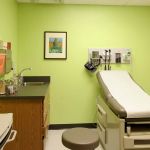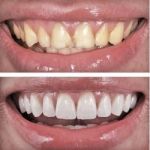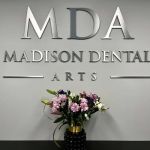How to Reverse Early Stages of Gum Disease
- Understanding Early Stages of Gum Disease
- Common Symptoms of Early Gum Disease
- How to Reverse Early Stages of Gum Disease
- Best Practices for Preventing and Reversing Gum Disease
- Professional Treatment Options for Gum Disease
1. Understanding Early Stages of Gum Disease
Gum disease, or periodontal disease, begins with inflammation of the gums, also known as gingivitis. It is often caused by poor oral hygiene, leading to the accumulation of plaque—a sticky film of bacteria on your teeth. If left untreated, gingivitis can develop into more severe gum disease, including periodontitis. The early stages, however, can often be reversed with proper care.
2. Common Symptoms of Early Gum Disease
In the early stages of gum disease, you might notice the following symptoms:
- Red, swollen gums
- Bleeding gums, especially when brushing or flossing
- Persistent bad breath
- Sensitivity in the teeth
Recognizing these symptoms early on is crucial in preventing the progression to more severe stages of gum disease.
3. How to Reverse Early Stages of Gum Disease
The good news is that early gum disease can often be reversed with consistent care and proper dental hygiene. Here are a few steps that can help reverse the early stages of gum disease:
- Improve your oral hygiene: Brushing at least twice a day and flossing daily is essential. Make sure to use fluoride toothpaste and a soft-bristled toothbrush.
- Use antimicrobial mouthwash: An antimicrobial mouthwash can help reduce plaque and bacteria in the mouth, promoting healthier gums.
- Professional cleanings: A visit to your dentist for regular professional cleanings is necessary to remove plaque and tartar buildup that can't be eliminated with regular brushing.
By adopting these habits, you can stop the progression of gum disease and even reverse the damage in its early stages.
4. Best Practices for Preventing and Reversing Gum Disease
Prevention is always better than cure. To maintain healthy gums and teeth, follow these best practices:
- Brush and floss regularly: The foundation of good oral hygiene is brushing and flossing daily. Don't rush your brushing—spend at least two minutes on it.
- Eat a healthy diet: Foods rich in vitamins and minerals, especially vitamin C, can help prevent gum inflammation. Avoid sugary snacks that contribute to plaque buildup.
- Stay hydrated: Drinking water throughout the day helps wash away food particles and bacteria from the mouth.
- Avoid smoking: Smoking is a major risk factor for gum disease, as it weakens your immune system and makes it harder for your gums to heal.
5. Professional Treatment Options for Gum Disease
If home care isn't enough to reverse early-stage gum disease, professional treatments may be necessary. These treatments may include:
- Scaling and root planing: This deep cleaning procedure removes plaque and tartar from below the gumline, helping to reduce inflammation.
- Antibiotic treatments: Dentists may prescribe antibiotics to help control infection and promote healing.
- Gum grafts: In cases where gum recession has occurred, gum grafts can help restore lost tissue and protect the teeth.
Consult your dentist for personalized recommendations based on the severity of your gum disease.
For more information on maintaining healthy gums and preventing gum disease, be sure to visit Dentistry Toothtruth, where we provide expert tips, advice, and product recommendations to help you care for your teeth and gums.







 Jody B Vance, DDS, MS, PC4.0 (119 review)
Jody B Vance, DDS, MS, PC4.0 (119 review) Community Health Centers4.0 (206 review)
Community Health Centers4.0 (206 review) Dental Smiles of Joliet4.0 (268 review)
Dental Smiles of Joliet4.0 (268 review) Equitas Health Short North Medical Center3.0 (96 review)
Equitas Health Short North Medical Center3.0 (96 review) Riverside Tooth Co.5.0 (276 review)
Riverside Tooth Co.5.0 (276 review) Madison Dental Arts5.0 (19 review)
Madison Dental Arts5.0 (19 review) The Importance of Oral Health Education During Pregnancy for a Healthy Pregnancy
The Importance of Oral Health Education During Pregnancy for a Healthy Pregnancy Best Tips for Brushing Your Teeth Properly for Healthy Gums: Essential Techniques for Oral Health
Best Tips for Brushing Your Teeth Properly for Healthy Gums: Essential Techniques for Oral Health Why Skipping Dental Checkups Can Lead to Bigger Oral Health Problems
Why Skipping Dental Checkups Can Lead to Bigger Oral Health Problems Advantages of Porcelain Dental Restorations
Advantages of Porcelain Dental Restorations How Can Diabetes Cause Tooth and Gum Problems? Preventing and Managing Oral Health Issues
How Can Diabetes Cause Tooth and Gum Problems? Preventing and Managing Oral Health Issues Healthy Habits for Promoting Good Oral Health and Hygiene: Tips for a Healthy Smile
Healthy Habits for Promoting Good Oral Health and Hygiene: Tips for a Healthy Smile